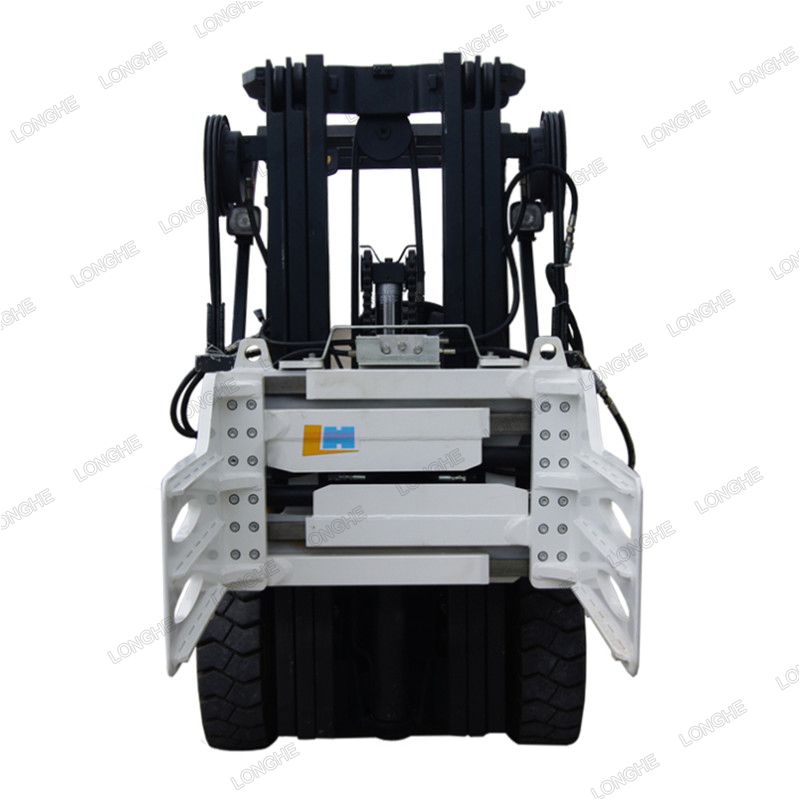Advantages of Using a Bale Clamp Attachment on a Forklift
When it comes to optimizing efficiency and productivity in material handling operations, the choice of equipment and attachments plays a crucial role. One such attachment that has gained significant prominence in various industries is the bale clamp attachment for forklifts. In this article, we will delve into the advantages of using a bale clamp attachment on a forklift, highlighting its versatility, cost-effectiveness, and impact on operational performance.
Enhanced Versatility
Bale Clamp Attachments are incredibly versatile tools that can handle a wide range of materials and products. Whether you are dealing with palletless loads, paper rolls, cotton bales, or recycling materials, these attachments can securely grip and transport them with ease. This versatility eliminates the need for multiple specialized attachments, streamlining your material handling process and reducing downtime associated with attachment changes.
Increased Productivity
Efficiency is the cornerstone of any successful business, and the use of a bale clamp attachment can significantly enhance your operational efficiency. These attachments are designed for quick and easy attachment to forklifts, minimizing setup time. Additionally, their ergonomic design and intuitive controls allow operators to swiftly and accurately handle materials, reducing the risk of damage and improving overall productivity.
Improved Safety
Safety is paramount in any workplace, and bale clamp attachments contribute to a safer working environment. By providing a secure grip on loads, they reduce the likelihood of accidents and injuries caused by shifting or falling materials. The enhanced visibility offered by these attachments further aids operators in avoiding obstacles and maintaining better control over their loads.
Cost-Effective Solution
Investing in a bale clamp attachment can be a cost-effective decision for your business. Instead of purchasing multiple specialized attachments for various tasks, you can rely on a single bale clamp attachment to handle a wide array of materials. This not only reduces your initial investment but also lowers maintenance costs associated with maintaining multiple attachments.
Minimal Product Damage
One of the key advantages of using a bale clamp attachment is the reduced risk of product damage during handling and transportation. The clamping mechanism ensures a firm and even grip on materials, preventing unnecessary compression or distortion. This is especially crucial when dealing with delicate or sensitive materials, such as paper, textiles, or food products.
Streamlined Operations
Efficiency in material handling translates to streamlined operations throughout your facility. With bale clamp attachments, you can move materials quickly and smoothly, optimizing the flow of goods within your warehouse or production area. This leads to reduced bottlenecks and improved overall throughput.
Environmental Benefits
In today's environmentally conscious world, businesses are increasingly seeking ways to reduce their carbon footprint. Bale clamp attachments support this goal by enabling efficient handling of recyclable materials such as paper, cardboard, and plastics. By streamlining the recycling process, these attachments contribute to sustainable practices and waste reduction.
Versatile Sizing Options
Bale clamp attachments come in various sizes and configurations, allowing you to choose the one that best suits your specific needs. Whether you require a compact attachment for tight spaces or a heavy-duty option for larger loads, there is a bale clamp attachment available to match your requirements.
In conclusion, the advantages of using a bale clamp attachment on a forklift are undeniable. From enhanced versatility and productivity to improved safety and cost-effectiveness, these attachments offer a myriad of benefits for businesses across various industries. By incorporating a bale clamp attachment into your material handling operations, you can expect smoother processes, reduced costs, and a more sustainable approach to handling materials.
526
0
0



Comments
All Comments (0)